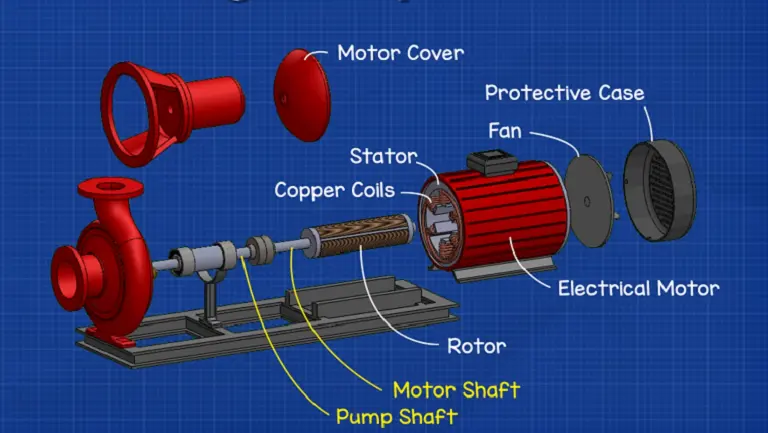A centrifugal pump converts rotational kinetic energy to hydrodynamic energy, propelling liquid outward from the pump’s center to its outlet. The impeller’s rotation generates centrifugal force, pushing the fluid to the outer edges of the pump casing.
Centrifugal pumps are essential in various industries, from water supply to petrochemical processes. They serve as the heart of countless fluid movement systems, providing a reliable means to transfer liquids efficiently. The design of a centrifugal pump is straightforward yet highly effective, consisting of an impeller secured on a rotating shaft, encased within a durable housing.
This pump operates on the principle of centrifugal force, which is the outward force perceived in a rotating reference frame. As the impeller spins, it imparts velocity to the liquid, transforming rotational motion into fluid flow.
This action not only increases the velocity of the liquid but also raises its pressure, enabling it to travel through piping systems or process units. The simplicity of their operation, combined with their robust construction, makes centrifugal pumps a popular choice for continuous, high-capacity applications where high flow rates are required.
Centrifugal Pump Basics
Understanding the basics of a centrifugal pump is essential for grasping its functionality. A centrifugal pump transforms mechanical energy into fluid energy using centrifugal force. It’s a vital piece of equipment in numerous industries, including water treatment, construction, and agriculture.
Let’s dive into the key components and operating principles to see how does a centrifugal pump work step by step.
Key Components
The performance of a centrifugal pump depends on its essential parts. Each component has a specific role that contributes to the overall function:
- Impeller: The rotating part that transfers energy to the fluid.
- Casing: A shell that encloses the impeller and directs the flow of fluid.
- Suction Pipe: A pipe that feeds the liquid into the pump.
- Delivery Pipe: A pipe that carries the liquid away from the pump.
- Bearing: Supports the shaft and reduces friction during operation.
- Shaft: A rod that connects to the impeller and motor.
- Seal: Prevents leaks along the shaft.
| Component | Function |
|---|---|
| Impeller | Transfers energy to fluid |
| Casing | Encloses impeller, directs flow |
| Suction/Delivery Pipes | Feed and discharge fluid |
| Bearing | Supports shaft, reduces friction |
| Shaft | Connects impeller to motor |
| Seal | Prevents leaks |
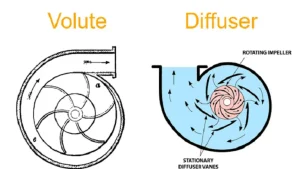
Operating Principle
The operating principle of a centrifugal pump is straightforward yet fascinating. Here’s how it works:
- The motor powers the shaft, making the impeller spin.
- As the impeller rotates, it pushes fluid outward with centrifugal force.
- The fluid moves from the suction pipe to the pump’s casing.
- In the casing, the fluid speeds up and its pressure increases.
- The high-pressure fluid exits through the delivery pipe.
This process repeats, creating a continuous flow. Here’s a simple breakdown of the steps:
| Step | Action | Result |
|---|---|---|
| 1 | Motor activates shaft and impeller | Impeller spins |
| 2 | Impeller pushes fluid | Fluid moves outward |
| 3 | Fluid enters casing | Speed and pressure increase |
| 4 | Fluid exits through delivery pipe | High-pressure flow |
Each step is crucial for the pump to move fluid efficiently. The design ensures a seamless transition from low to high pressure, essential for various applications.
Pump Types
A centrifugal pump moves fluid by converting rotational kinetic energy to hydrodynamic energy. The main parts are an impeller and a casing. Fluid enters the pump impeller along its axis and is cast out by centrifugal force through the impeller’s vane tips. The pump design influences its performance and applications.
Let’s explore two main types of centrifugal pumps: single-stage and multi-stage.
Single-stage Pumps
Single-stage centrifugal pumps have one impeller and are the most common type for low-pressure, high-flow rate conditions. They are ideal for pumping water, light chemicals, and other thin liquids.
Here are key points about single-stage pumps:
- Simple design: This makes them easy to maintain.
- High flow rates: They handle large volumes of liquid efficiently.
- Cost-effective: Less complex, so they are cheaper to produce.
In single-stage pumps, the design is straightforward, leading to lower costs for installation and repair. These pumps are used in a variety of settings, including:
- Water supply systems
- Irrigation
- Cooling systems
- Drainage
Below is a table outlining their typical applications:
| Application | Description |
|---|---|
| Water Supply | Pumps used in municipal water supply systems. |
| Irrigation | Used for agricultural purposes to move water. |
| Cooling Systems | Integral in circulating coolants in machinery. |
| Drainage | Helps in removing water from flooded areas. |
Multi-stage Pumps
Multi-stage centrifugal pumps contain two or more impellers. They are used for high-pressure conditions. The fluid is passed through multiple impellers, each increasing its pressure.
These pumps are suitable for:
- High-pressure tasks: Like boiler feedwater or high-rise building water supply.
- Long-distance liquid transfer: Useful in pipelines spanning vast distances.
- Deep wells: They can draw water from significant depths.
Multi-stage pumps have several advantages:
- Higher pressure output: Each stage boosts the pressure.
- Efficient energy use: They optimize power consumption.
- Compact design: Despite multiple stages, they save space.
They are a go-to choice for specific industries:
- Petroleum industry
- Boiler feed applications
- Water treatment plants
- High-rise buildings
Here’s a glimpse of their applications in a table:
| Application | Description |
|---|---|
| Petroleum Industry | Used for transporting crude oil and condensate. |
| Boiler Feed Applications | Supply water to boilers at high pressures. |
| Water Treatment Plants | Essential for processing and purifying water. |
| High-rise Buildings | Deliver water to upper floors effectively. |
Multi-stage pumps are robust, reliable, and capable of serving demanding applications where single-stage pumps might not be sufficient.
Flow Mechanics
A centrifugal pump moves fluid by converting rotational kinetic energy into hydrodynamic energy. This magic happens in the flow mechanics of the pump. Inside, a part called an impeller spins fast. As it whirls around, fluid enters the center and gets flung outward by force.
This action speeds up the fluid and sends it shooting out to where it needs to go. Let’s dive into the flow mechanics that make this possible.
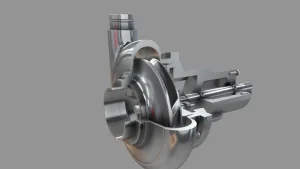
Fluid Dynamics
Understanding fluid dynamics is key to getting how a centrifugal pump works. Imagine water on a merry-go-round. As it spins, water flies outwards, right? That’s exactly what happens in a pump.
Here’s the simple science behind it:
- Impeller action: The heart of the pump is the impeller. It’s got blades that spin super fast.
- Speed: This spinning action speeds up the fluid, giving it energy to move.
- Direction: The design of the pump guides the fluid to move in the right path.
When fluid enters a centrifugal pump, it hits the impeller at the center or ‘eye’. The impeller’s spinning blades push the fluid outward. This process is all about changing the fluid’s direction and speed. As the fluid moves from the center to the edge, it gains speed and pressure.
We can show this change with a simple table:
| Position | Speed | Pressure |
|---|---|---|
| Impeller Eye (Center) | Slow | Low |
| Impeller Edge | Fast | High |
The shape of the impeller and the casing turns speed into pressure. This pressure is what moves the fluid through pipes or up to higher levels.
Energy Transfer
In a centrifugal pump, energy transfer is all about giving power to the fluid. Here’s a step-by-step look at how energy makes the journey:
- Motor to Impeller: First, a motor gives energy to the impeller by making it spin.
- Impeller to Fluid: Next, the impeller blades transfer energy to the fluid. They do this by using force to make the fluid move faster.
- Speed to Pressure: As fluid speeds up, it also gains pressure. This happens because of the pump’s clever design.
Think of it like a soccer player kicking a ball. The player’s foot (impeller) gives energy to the ball (fluid). The harder the kick (spin), the faster the ball moves and the further it goes. In a centrifugal pump, the “kick” is a mix of rotational energy and the pump’s design, which together boost the fluid’s pressure and speed.
Check out this breakdown of the energy transfer:
| Step | Energy Type | What Happens |
|---|---|---|
| 1. Motor Powers Impeller | Electrical to Mechanical | Motor spins impeller. |
| 2. Impeller Moves Fluid | Mechanical to Kinetic | Impeller blades push fluid. |
| 3. Fluid Gains Pressure | Kinetic to Pressure | Fluid speed converts to pressure. |
This energy journey is why a centrifugal pump can send fluid far and high with great force.
Impeller Function
A centrifugal pump uses a spinning wheel, called an impeller, to move water or other fluids. This impeller is key. It spins fast, pushing the fluid out with force. This makes the fluid move from one place to another.
Now, let’s dive deeper into how the impeller works and why it’s so important.
Design Variations
Different centrifugal pumps have impellers with various designs. Each design has a unique job. Here are some types:
- Open impellers have blades attached to a hub. This type is good for liquids with stuff in them.
- Semi-open impellers have a back wall that gives more strength. They’re used for less clean liquids.
- Closed impellers have blades between two discs. They are best for clean liquids because they’re efficient and strong.
Here’s a table showing how design affects use:
| Impeller Type | Use |
|---|---|
| Open | Liquids with solids |
| Semi-open | Semi-clean liquids |
| Closed | Clean liquids |
Each design impacts the pump’s efficiency and what it can pump. Choosing the right impeller is key.
Impact On Performance
The impeller’s design deeply affects how well a centrifugal pump works. Here’s why:
- Size and Speed: Bigger impellers or those that spin faster push more liquid.
- Shape: The shape of the blades can make the pump more powerful or efficient.
- Material: What the impeller is made of can handle different liquids and last longer.
For example, a pump with a closed impeller will work well for clean water. It moves the water smoothly and quickly. But, if the water has sand or leaves in it, a semi-open or open impeller is better. It won’t get clogged as easily. The material, like stainless steel or plastic, also matters. It needs to be tough enough for the liquid it’s pumping.
So, the impeller’s design directly links to the pump’s success in moving liquids efficiently and without damage.
Suction And Discharge
Centrifugal pumps move fluids using rotational energy. This energy typically comes from an engine or electric motor. The process involves two key stages: suction and discharge. During suction, the pump pulls fluid into its inlet. This is the beginning of the fluid’s journey.
After entering the pump, the fluid hits the impeller. The impeller spins rapidly, forcing the fluid outward due to centrifugal force. This action increases the fluid’s velocity. The fluid then moves into the discharge phase. Here, it exits the pump through the outlet. The pump’s design converts the high velocity into increased pressure. This allows the fluid to travel to its destination.
Inlet Conditions
Understanding the inlet conditions is crucial for a centrifugal pump’s efficiency. The conditions refer to how fluid enters the pump.
Here are some key factors at the pump’s inlet:
- Fluid Velocity: The speed at which fluid enters the pump should not be too high. High speed can cause air bubbles and decrease efficiency.
- Suction Pipe Size: The diameter of the suction pipe must match the pump’s inlet. A mismatch can cause turbulence and loss of flow.
- Net Positive Suction Head (NPSH): This is the pressure needed to keep the fluid above its vapor pressure. It prevents cavitation.
The following table summarizes ideal inlet conditions for a centrifugal pump:
| Condition | Importance | Ideal State |
|---|---|---|
| Fluid Velocity | Prevents air bubbles | Low to Moderate |
| Pipe Size | Reduces turbulence | Matches inlet diameter |
| NPSH | Avoids cavitation | Above vapor pressure |
Outlet Dynamics
The outlet dynamics focus on how the fluid exits the pump. It’s a critical phase where fluid gains pressure. Here, the fluid’s velocity from the impeller is converted into pressure. This is due to the pump’s volute design or diffuser. A well-designed outlet path ensures maximum efficiency and desired flow rate.
Key aspects of outlet dynamics include:
- Pressure Build-up: The pump’s casing design helps increase fluid pressure as it exits.
- Flow Rate: The desired flow rate must align with the system’s requirements. It ensures the fluid reaches its target efficiently.
- Discharge Pipe Size: Similar to the inlet, the discharge pipe size should match the pump’s outlet. This prevents pressure drop and flow loss.
An optimal outlet design is summarized in the table below:
| Aspect | Role | Optimal Condition |
|---|---|---|
| Pressure | Drives fluid through system | High enough to overcome resistance |
| Flow Rate | Ensures efficiency | Matches system needs |
| Pipe Size | Minimizes losses | Complements outlet size |
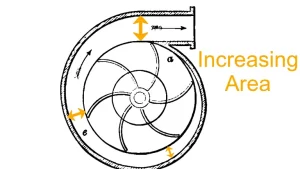
Applications
Understanding the inner workings of a centrifugal pump unlocks a world of applications across various fields. At its core, this pump uses a simple mechanism to convert rotational energy into fluid movement. The magic happens in the impeller, where the rapid spinning action forces fluids outward, increasing their velocity and pressure. This efficient process makes the centrifugal pump a favorite in many settings.
Let’s explore how these devices serve both industrial and residential needs, leveraging the advantages of centrifugal pumps.
Industrial Uses
Centrifugal pumps are workhorses in the industrial realm, thanks to their robust design and versatility. Industries rely on them for a myriad of tasks:
- Water treatment: They push water through filtering systems to clean it.
- Chemical processing: Centrifugal pumps handle various chemicals, often resistant to corrosive substances.
- Food and beverage: They ensure sanitary processing by moving liquids through production lines.
These pumps also play a crucial role in the following industrial activities:
| Industry | Function |
|---|---|
| Pharmaceuticals | Transferring delicate solutions |
| Oil and gas | Moving crude and refined products |
| Manufacturing | Cooling machinery with circulated water |
The advantages of centrifugal pumps like easy maintenance, durability, and efficiency, make them ideal for these demanding environments. They support a broad spectrum of fluid densities and can be adjusted to fit specific flow rates and pressures required by different industrial processes.
Residential Uses
In residential settings, centrifugal pumps maintain our daily comfort and hygiene. They are integral to numerous home systems:
- Water supply: Pumps draw water from wells or boost city water pressure.
- Heating systems: They circulate hot water for radiators or underfloor heating.
- Lawn irrigation: Pumps distribute water for lush, green gardens.
These pumps also enhance the following residential conveniences:
| Application | Description |
|---|---|
| Swimming Pools | Circulating and filtering water |
| Home Appliances | Integral part of washers and dishwashers |
| Firefighting | Home fire sprinkler systems for emergencies |
Residential use of centrifugal pumps highlights their advantages such as low cost, minimal space requirements, and ease of installation. These benefits are particularly valuable in home settings, where budget and space are often limited. Their reliability and low noise levels contribute to a peaceful home environment while fulfilling essential functions.
Maintenance Tips
Centrifugal pumps play a crucial role in moving liquids. They spin at high speeds to push water or other fluids. Proper maintenance is key for their smooth operation. Let’s dive into how to keep them running well.
Routine Checks
Regular checks ensure your pump performs at its best. Follow these steps:
- Inspect seals and gaskets: Look for leaks or wear.
- Check the impeller: Ensure it’s not damaged or clogged.
- Monitor noise and vibration: Unusual sounds can signal issues.
- Verify pressure gauges: They should match the pump’s specifications.
- Lubricate bearings: Use the right oil or grease.
A monthly inspection is a good practice. Record findings to spot trends.
| Task | Frequency |
|---|---|
| Seal inspection | Monthly |
| Impeller check | Every 3 months |
| Noise monitoring | Weekly |
Common Issues
Knowing what problems can arise helps in early detection:
- Leakage: Often from worn seals or gaskets.
- Cavitation: Bubbles form and burst, damaging the pump.
- Overheating: Caused by dry running or blockages.
- Corrosion: Chemicals or water quality can eat away parts.
- Wear and tear: Regular use leads to damage over time.
To prevent issues, clean the pump regularly and replace worn parts. Use a checklist:
- Check for leaks daily.
- Clean the pump and surrounding area weekly.
- Inspect and lubricate bearings monthly.
- Review performance and maintenance logs quarterly.
Timely action saves money and extends the pump’s life.
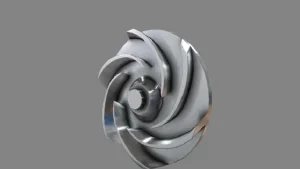
Troubleshooting
A centrifugal pump spins liquid with a wheel to move it through a system. But sometimes things go wrong. Let’s dive into common issues and fix them. Understanding troubleshooting is key to keeping your pump in top shape. We’ll explore two main problems: Low Flow and Vibration.
Low Flow Problems
When a centrifugal pump doesn’t push enough liquid, it’s a low flow issue. Several reasons might cause this. Let’s check them out:
- Clogged Filters: Dirt can block the filter, restricting flow.
- Impeller Wear: A worn-out impeller can’t move liquid well.
- Pipe Leaks: Cracks in the pipes let liquid escape, reducing flow.
Here’s a quick table of common causes and fixes:
| Cause | Fix |
|---|---|
| Air Leaks | Seal the system tight. |
| Wrong Speed | Adjust the motor’s RPM. |
| Valve Issues | Check and open any closed valves. |
Remember to keep the suction area clear and the pump primed. A dry pump won’t work!
Vibration Issues
Shakes and rattles in a centrifugal pump mean vibration issues. This can harm the pump and pipes. Let’s find out what causes these shakes:
- Imbalance: A wobbly wheel or impeller can shake the whole pump.
- Misalignment: If the pump and motor don’t line up, they can vibrate.
- Loose Parts: Any loose bolts or parts can lead to vibrations.
Check the table below for a summary of vibration causes and solutions:
| Cause | Solution |
|---|---|
| Bent Shaft | Replace or straighten the shaft. |
| Worn Bearings | Swap out the old bearings for new ones. |
| Flow Turbulence | Fix the system design to smooth out flow. |
Ensure all parts are secure and the pump is well-mounted. Regular maintenance helps catch these issues early!
FAQ
Understanding the mechanics of a centrifugal pump can seem complex at first. But, with a simple explanation, it’s quite fascinating. We often get questions about these powerful machines. So, let’s dive into some frequently asked questions (FAQs) to shed light on how centrifugal pumps operate and their core functions. We’ll explore their working principle, the pressure vs. flow debate, their main purpose, and the key differences from their centripetal counterparts.
How Does A Centrifugal Pump Work Simple?
A centrifugal pump moves fluid by converting rotational kinetic energy into hydrodynamic energy. This process involves a motor that spins an impeller. Fluid enters the pump, hits the rotating impeller, and is flung outward. The centrifugal force increases the fluid’s velocity, transforming it into pressure as it exits the pump.
Do Centrifugal Pumps Create Pressure Or Flow?
Centrifugal pumps are designed to generate flow. The flow then creates pressure as a result of the system’s resistance. Think of it as a fan blowing air; it creates airflow, and the room’s walls create pressure by resisting the air movement.
What Is The Main Function Of A Centrifugal Pump?
The main function of a centrifugal pump is to move fluid through a piping system. It does this by converting mechanical energy from a motor to energy in the fluid. The pump transports various types of fluids in a wide range of applications, from water supply to industrial use.
What Is The Difference Between A Centrifugal Pump And A Centripetal Pump?
Centrifugal pumps and centripetal pumps differ primarily in how they move fluid. A centrifugal pump uses centrifugal force to push fluid outward from the center of rotation. In contrast, a centripetal pump guides fluid towards the center for processing. Centripetal pumps are not as common and serve more specialized roles.
Conclusion
Understanding the mechanics of a centrifugal pump is essential for anyone involved in fluid movement tasks. These pumps use simple yet effective principles to transfer liquids efficiently. By converting rotational energy into fluid flow, they serve a myriad of industries.
Remember, choosing the right pump makes all the difference in application success. Stay informed and make educated decisions for optimal performance in your fluid handling needs.

